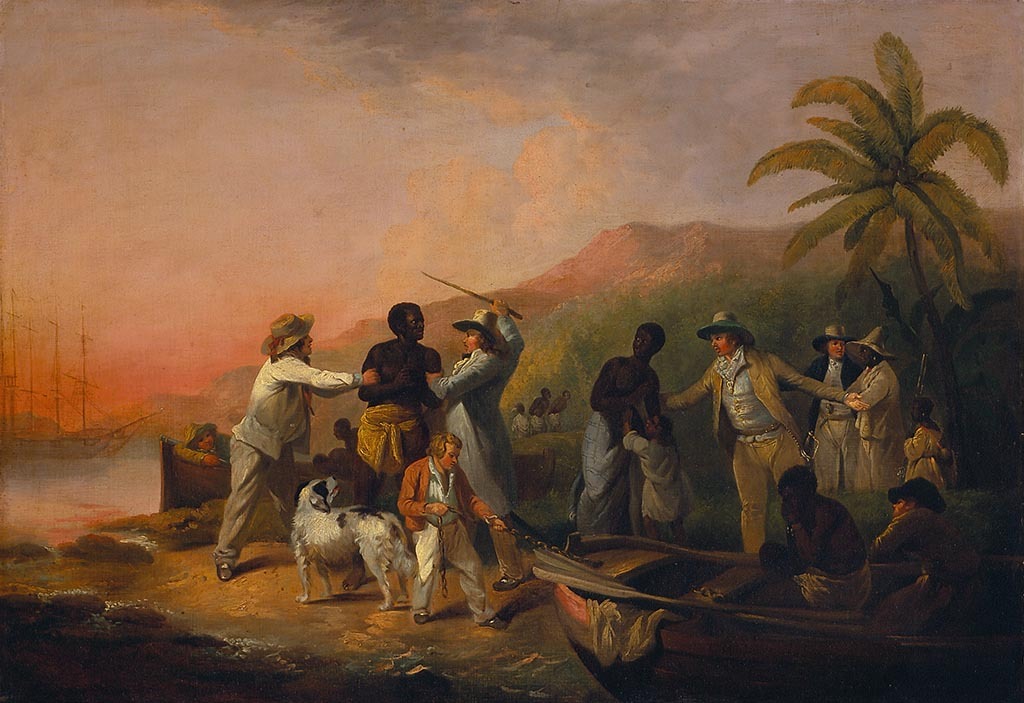George Morland, English, 1763 - 1804
Replica of Execrable Human Traffick, [The Affectionate Slaves, Slave Trade], 1789
Oil on canvas
33 ½ × 48 in. (85.1 × 121.9 cm)
Painting
1983-110 DJ
Learn More
In the mid-17th century, British merchants and ship owners emerged as major participants in the transatlantic slave trade, forcibly transporting enslaved Africans to labor in European colonies in the Americas. Remarkably, by the late 18th century, England had become the world’s leading opponent of slavery. Descriptions and illustrations of the brutal form that slavery took in the New World— particularly of the horrific conditions onboard British-owned slave ships—circulated widely, spurring an abolitionist movement with unprecedented popular support. The first painter to publicly exhibit abolitionist imagery in Great Britain was George Morland, who in 1788 entered the canvas Execrable Human Traffick at the Society of the Artists in London. This painting is a replica of the original, painted one year later. The imagery of both canvases was inspired by “The Slave Trade: A Poem Written in the Year 1788,” by Morland’s friend William Collins. The poem describes the anguish felt by an African family who are captured, separated, and sold into slavery by British traders. Morland’s makes visible the grief and fear of the of Black protagonists: the couple’s terrified young son clings to his mother, while his father is threatened by the traders. At right, a fourth captured African shields his eyes from the violence unfolding before him. Focusing on the captees’ emotions, Morland emphasized their humanity, unambiguously condemning the inhumanity of the slave trade. In 1791, Execrable Human Traffick along with its companion piece, African Hospitality (also in the Menil Collection) were published as engravings, expanding their reception beyond the small and primarily upper-class audience of the Royal Academy.

